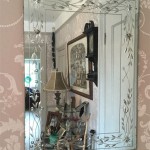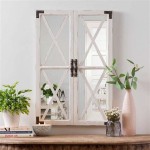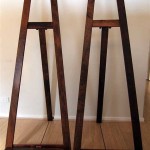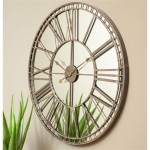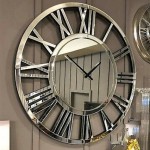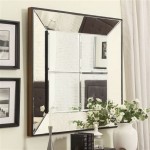The Edwardian Dressing Table With Mirror: A Reflection of an Era
The Edwardian era, spanning the reign of King Edward VII from 1901 to 1910, was a period of significant social and aesthetic change. This transformation is clearly reflected in the furniture of the time, particularly in the elegant and often elaborate Edwardian dressing table with mirror. These pieces offer a glimpse into the daily lives and values of the upper and middle classes, showcasing the era's emphasis on luxury, craftsmanship, and a burgeoning sense of personal style.
Distinctive Features of the Edwardian Dressing Table
Edwardian dressing tables are readily identifiable by several key characteristics. Firstly, they often employed high-quality materials. Mahogany, walnut, and satinwood were popular choices, reflecting the era's appreciation for rich, dark tones and fine wood grains. These woods were frequently embellished with intricate inlays, marquetry, and decorative veneers, adding further layers of opulence. Secondly, Edwardian dressing tables often featured cabriole legs, a curved leg design originating in the 18th century, which lends a sense of grace and elegance. These legs might be adorned with decorative carvings or brass accents. Finally, the accompanying mirrors were a defining feature. Often large and elaborately framed, they might be tri-fold or single, adding to the overall grandeur of the piece.
The Dressing Table as a Symbol of Status and Femininity
The Edwardian dressing table was more than just a functional piece of furniture; it served as a symbol of status and femininity. Owning a beautifully crafted dressing table signified a certain level of affluence and social standing. It was a focal point of the feminine domain, a private space where women could engage in the elaborate beauty rituals of the time. The dressing table, with its array of brushes, combs, perfumes, and powders, became a symbol of the Edwardian woman’s increasingly complex relationship with beauty and self-presentation.
The Influence of Earlier Styles and the Emergence of New Trends
Edwardian furniture design borrowed heavily from earlier periods, particularly the Georgian and Victorian eras. The continued use of cabriole legs, for example, reflects this influence. However, Edwardian designers also began to incorporate elements of the burgeoning Art Nouveau movement. This style, characterized by its flowing lines and naturalistic motifs, can be seen in the more delicate and curvilinear designs found on some Edwardian dressing tables, particularly in the metalwork and decorative detailing.
The Mirror: A Central Element of the Edwardian Dressing Table
The mirror was arguably the most important component of the Edwardian dressing table. It was not merely a functional object but a statement piece. Tri-fold mirrors were especially fashionable, allowing for a multi-angled view. The frames of these mirrors were often highly decorative, featuring intricate carvings, gilding, or inlay work. The size and embellishment of the mirror contributed significantly to the overall impression of luxury and refinement.
Construction and Craftsmanship of Edwardian Dressing Tables
Edwardian furniture makers prided themselves on their craftsmanship. Dovetail joints, hand-carved details, and meticulous finishing techniques were hallmarks of the era. The quality of construction is one reason why many Edwardian dressing tables have survived to this day. These pieces were built to last, reflecting the era's emphasis on quality and durability. The attention to detail extended to the hardware as well, with ornate brass handles and pulls adding a final touch of elegance.
Edwardian Dressing Tables in the Modern Home
Today, Edwardian dressing tables with mirrors are highly sought-after by antique collectors and interior design enthusiasts. Their timeless elegance and exquisite craftsmanship make them a desirable addition to a variety of home décor styles. They can add a touch of vintage charm to a bedroom or serve as a striking focal point in a dressing room. The enduring appeal of these pieces testifies to the quality of their design and construction, as well as their ability to evoke a sense of history and romance.
Caring for an Antique Edwardian Dressing Table
Owning an antique Edwardian dressing table is a privilege that comes with certain responsibilities. Proper care is essential to preserve these beautiful pieces for future generations. Regular dusting with a soft cloth is crucial, and avoiding harsh chemicals or abrasive cleaners is essential to protect the delicate finish. Extreme temperature fluctuations and excessive humidity should also be avoided, as these can damage the wood. Consulting with a professional antique restorer is recommended for any major repairs or restoration work.

Antique Carved Walnut Edwardian Dressing Table Chest Of Drawers Mirror Back Masterfind

Edwardian Antique Dressing Table With Mirror Regency Style Inlaid Black Painted

The Penderyn Furniture Co Victorian Mahogany Dressing Table Swing Mirror

Sold Example Of My Work Antique Dressing Table With Mirror Vintage Vanity Painted Furniture Albany New York

Small Antique Dressing Table Mirror Toilet Georgian Oval Mirrors Cheval

Sold 1930 S Victorian Vanity Antique Dressing Table With Mirror Israel

A Buyer S Guide To Identifying Antique Dressing Tables

Small Antique Dressing Table Mirror Swing Georgian Skeleton Top Mirrors Cheval Toilet

Antique Victorian Mahogany Dressing Table Design Mirror Girl Bedroom Decor

Mary S Antique Dressing Table Makeover Confessions Of A Serial Do It Yourselfer

